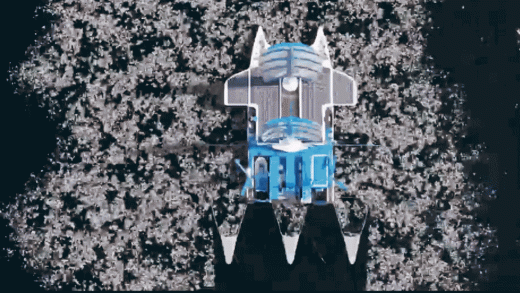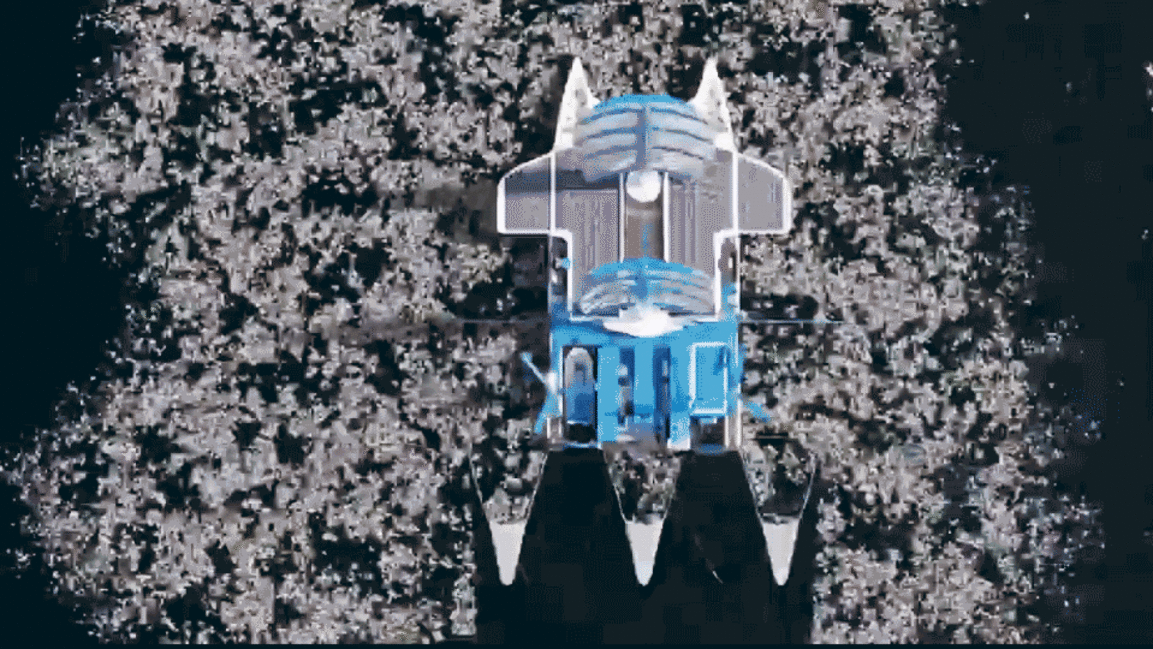These may be the 5 most hopeful tech developments of 2021
By Sarah Goff-Dupont–Atlassian
Welp, 2021 is nearly behind us. And if you ask me, it wasn’t quite the about-face from 2020 we’d been hoping for. It wasn’t as rough as last year. But it was still kinda rough.
But! Dogged optimists that we are, we refuse to be cowed by doom-saying, humbuggery, and fashionable cynicism. So we’re delighted to present you, dear readers, with five tech-flavored things from the past year you can feel unequivocally good about.
1. A flotilla of plastic-eating ocean cleanup robot boats is coming ????
Every ocean has a junkyard. These floating trash collections are formed by currents that collect all manner of flotsam into little eddies where the trash swirls around on the surface. Or in the case of the “great Pacific garbage patch,” not so little. It’s actually two patches – one on each side of the Pacific – and, in total, twice the size of Texas. (That’s three times the size of France, for those on the metric system.)
Enter Jenny: an aquatic trash collection system that skimmed 20,000 pounds of floating plastic out of the Pacific this year. Jenny operates by using two boats to pull a net between them, similar to trawl-fishing, to scoop up trash. The only downside is that those boats leave a carbon footprint.
However, other ocean-cleaning vessels are being developed that build on the trawl-and-capture concept but don’t burn fossil fuels. Meet FRED, for instance – the Floating Robot for Eliminating Debris. FRED runs on solar power, trapping pieces of plastic as small as 5 mm. (That’s 0.2 inches, for those in the U.S.) Even celebrities are getting in on the action. Coldplay sponsored a similar plastic collection robot boat this year, which was deployed to Malaysia where it’s collecting up to 110 tons of trash each day.
My personal favorite, though, is the Manta: a 185-foot, zero-pollution trash-eating sailboat that, when not serving as a state-of-the-art research lab, runs autonomously and collects three tons of trash per hour. Test runs are anticipated in 2024. From there, Mantas will be deployed to some of the world’s largest rivers and coastal areas, scarfing up floating garbage before it finds its way to the open ocean. Watch this four-minute video to learn more. You’ll be glad you did.
So, what do we do with all this robot-collected plastic? Here’s hoping those ocean cleanup organizations know about Nzambi Matee, a Kenyan entrepreneur who recycles plastic into bricks that are stronger than concrete at her factory in Nairobi. At the risk of using corporate jargon, that’d be a seriously synergistic partnership.
And if, like me, you believe an ounce of prevention is worth a pound of cure (that’s 28.3g and 0.45kg, respectively, for those… OK, I’ll stop now), single-use plastic straws and bags are trending downward. The market for reusable straws has grown 12 percent in recent years. And China began implementing a ban on plastic straws and most single-use plastic bags this year, as did Thailand.
2. Renewable energy for fun and profit ????
The sun isn’t just a deadly laser. It’s also what powered this camper van on a 3,000-km road trip around Europe in September. Built as a proof-of-concept by Dutch students, the van features a bathroom, living area, kitchen, and double bed. Even on cloudy days, it can still produce 60-70 percent of its own energy, with the rest coming from standard electric vehicle charging stations. Concept proven.
Still, that whole “requires sunlight” thing is a limiting factor for large-scale solar, which is why wind power seems so promising. But wind turbines have their limits, too. The fact that they can’t operate in extreme winds—exactly when they’d be able to capture extreme amounts of energy—is a tragic irony.
Or it was, until this year when Japanese startup Challenergy installed a wind turbine capable of operating in a typhoon in the Philippines. With typhoons and hurricanes becoming more frequent, generating power from them could be the silver lining to all those storm clouds.
And soon we’ll all be able to generate wind power from the comfort of our own homes with the help of turbines disguised as kinetic sculptures. The design features dozens of spinning blades suspended in a grid and can be set up alongside any exterior wall. While it’s still in the prototyping phase, the designer is currently in talks with manufacturers. Could wind walls be the must-have gift of holiday seasons to come?
3. Sustainable agriculture is moo-ving ahead
Y’know how reducing methane emissions is thought to be one of the most effective ways to slow global warming? And you’ve “herd” how the planet’s 1 billion-plus cows produce a whole lot of methane?
Well, we’ve now got a way to reduce the cow population while still enjoying ice cream, thanks to an Israeli startup called Imagindairy. (Best. Name. Ever.) Their technology uses microorganisms to produce whey and casein, the primary components of dairy milk, eliminating the need for cows to be involved at all. This moo-less moo-juice is expected to land in grocery stores in 2023.
Speaking of turning agriculture on its head, U.K.’s largest vertical farm harvested its first crop of leafy greens this year. The farm can grow about 2 million heads of greens per year in vertical towers, quadrupling the yield you’d traditionally get from a piece of land that size. Unlike other vertical farms that rely on artificial light and heat, this farm just needs sunlight. And looking toward the future, the city of Shenzhen, China, announced plans for a 51-story “farmscraper” that will include offices, shops, and a 10,000-acre vertical farm capable of feeding 40,000 people a year.
Meanwhile, a group of refugees in Cameroon is taking the concept of “grassroots” to a whole new level. The camp where they live was completely deforested as residents cut down trees for fuel. Using “cocoon” technology, which involves an underground water tank that surrounds the roots of seedlings, they began reforesting the area in 2018. Now those trees are big enough to provide the shade needed to grow other crops, giving the refugees a more stable source of food.
Last, from the “What the whaaaaaaaaat?” files, scientists are now growing (yes: growing) metals. A metal farm in Malaysia is proving the viability of a technique called phytomining to produce nickel without the heavy machinery, toxic run-off, and general land devastation associated with traditional mining. It works by cultivating trees that accumulate metal concentrations, shaving off their growth periodically, burning it, and refining the ashy bio-ore, which is roughly 25 percent nickel by weight.
4. Public, private, and non-profit groups are on a mission to close the digital divide ????
Lack of access to reliable high-speed internet service and other utilities exacerbates the economic, educational, and social disparities that already harm much of the world’s population.
That’s why UNICEF’s Office of Innovation is going big on eliminating the digital divide. This year they established an innovation center in Sweden, focused on sourcing solutions from the very people UNICEF serves: children and youth. Already, teens have prototyped lamps to help children in refugee camps do their homework when there’s no electricity.
The Office of Innovation also runs a program called Giga that aims to “connect every school to the Internet and every young person to information, opportunity, and choice.” Giga has already identified one million schools in need of connectivity and has brought internet service to around 3,000 of them. They recently partnered with African e-commerce platform Jumia to give schools an easier way to sign up and pay for internet service.
Given that nearly half the world still has no meaningful access to the information superhighway, there’s a long road ahead. But a team of technicians in Detroit is making strides, one household at a time. Members of the Detroit Equitable Internet Initiative (DEII) go door-to-door in underserved neighborhoods installing WiFi equipment at no charge and offering internet service for pennies a day. Being from these communities themselves, DEII workers have an unparalleled ability to win residents’ trust and strategize on the fly.
On the infrastructure side, public-private partnerships are becoming more popular. For example, East Cleaveland, one of the poorest and least connected cities in the U.S., is getting a $650,000 broadband expansion courtesy of Microsoft, Eaton Corporation, and General Electric. The infrastructure will connect 2,000 additional households with 4G service for just $15 a month.
5. A(nother) year of video conferencing bloopers ????????????
Tech innovations are amazing, but they still require human participation. Thankfully, that means tech can provide a fair amount of unintentional entertainment value. 2020 taught us the importance of turning your camera and microphone off when using the bathroom, bad-mouthing your teacher, and/or eschewing pants during a call. And the fun continues! 2021 brought us bloopers you can share at work without inviting a call from HR. Let’s relive the magic, shall we?
The year kicked off with the befuddled attorney who couldn’t figure out how to un-filter his appearance on Zoom. Yes, friends, we’re talking about the “I am not a cat” lawyer.
Then, the very next day, the universe gave us the gift of politician Tom Emmer stuck on a filter that made him appear upside-down. While delivering a speech. Live. To the U.S. House of Representatives.
Both incidents recall a 2020 blooper that caused the internet to lose its mind when community organizer Lizet Ocampo turned on a filter that made her look like a potato… then couldn’t turn it off. One of her team members tweeted a picture of it that instantly went viral. The best part, though, was the way Ms. Ocampo made the incident even more a-peel-ing.
The moral of these stories? Friends don’t let friends use filters. Please Zoom responsibly in 2022 and beyond.
This article originally appeared on Atlassian’s blog and is reprinted with permission.
Fast Company , Read Full Story
(33)



